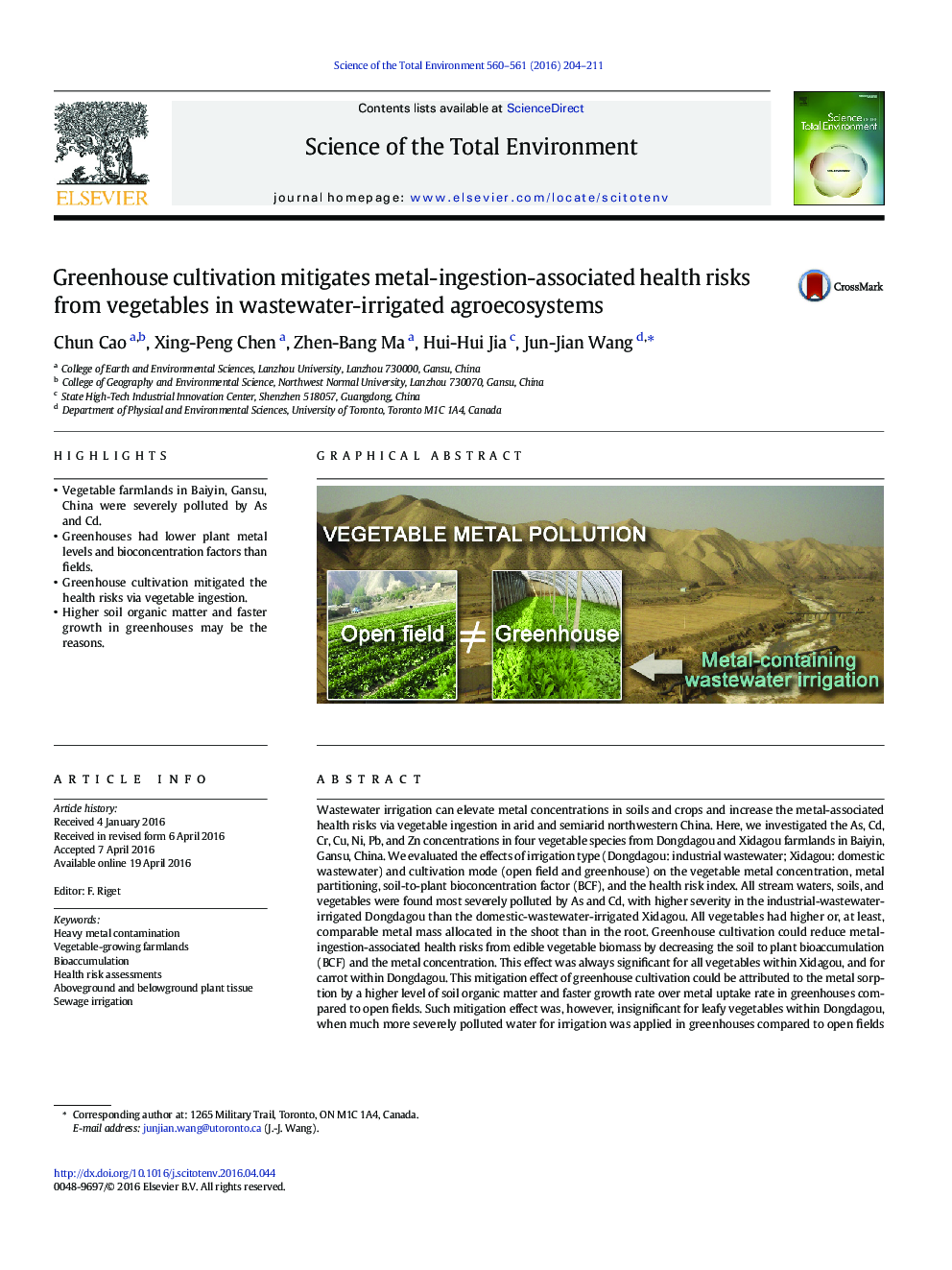| Article ID | Journal | Published Year | Pages | File Type |
|---|---|---|---|---|
| 6321299 | Science of The Total Environment | 2016 | 8 Pages |
â¢Vegetable farmlands in Baiyin, Gansu, China were severely polluted by As and Cd.â¢Greenhouses had lower plant metal levels and bioconcentration factors than fields.â¢Greenhouse cultivation mitigated the health risks via vegetable ingestion.â¢Higher soil organic matter and faster growth in greenhouses may be the reasons.
Wastewater irrigation can elevate metal concentrations in soils and crops and increase the metal-associated health risks via vegetable ingestion in arid and semiarid northwestern China. Here, we investigated the As, Cd, Cr, Cu, Ni, Pb, and Zn concentrations in four vegetable species from Dongdagou and Xidagou farmlands in Baiyin, Gansu, China. We evaluated the effects of irrigation type (Dongdagou: industrial wastewater; Xidagou: domestic wastewater) and cultivation mode (open field and greenhouse) on the vegetable metal concentration, metal partitioning, soil-to-plant bioconcentration factor (BCF), and the health risk index. All stream waters, soils, and vegetables were found most severely polluted by As and Cd, with higher severity in the industrial-wastewater-irrigated Dongdagou than the domestic-wastewater-irrigated Xidagou. All vegetables had higher or, at least, comparable metal mass allocated in the shoot than in the root. Greenhouse cultivation could reduce metal-ingestion-associated health risks from edible vegetable biomass by decreasing the soil to plant bioaccumulation (BCF) and the metal concentration. This effect was always significant for all vegetables within Xidagou, and for carrot within Dongdagou. This mitigation effect of greenhouse cultivation could be attributed to the metal sorption by a higher level of soil organic matter and faster growth rate over metal uptake rate in greenhouses compared to open fields. Such mitigation effect was, however, insignificant for leafy vegetables within Dongdagou, when much more severely polluted water for irrigation was applied in greenhouses compared to open fields within Dongdagou. The present study highlights greenhouse cultivation as a potential mitigating approach to providing less-polluted vegetables for residents in the severely polluted area in addition to the source pollution control.
Graphical abstractDownload high-res image (685KB)Download full-size image
